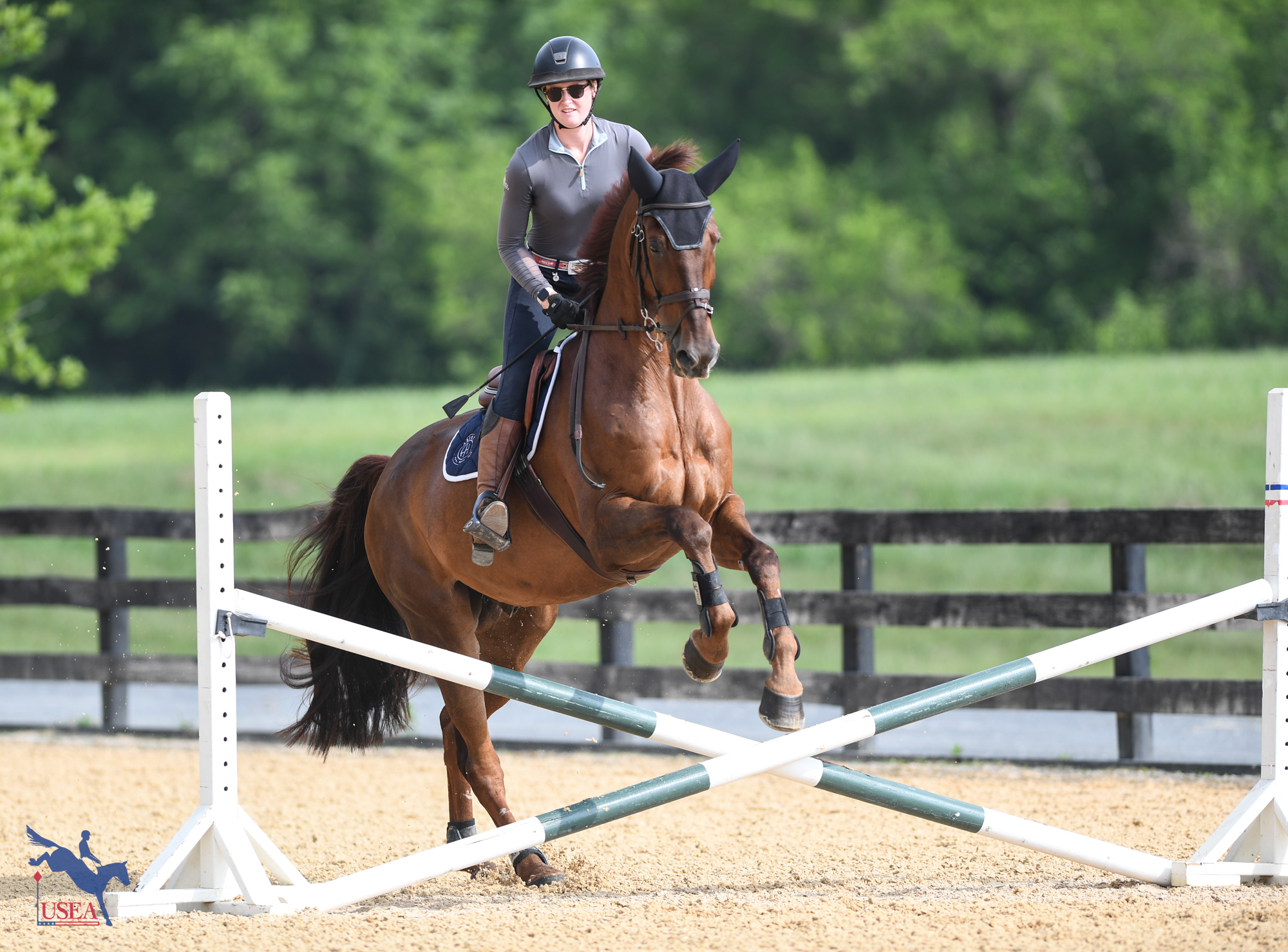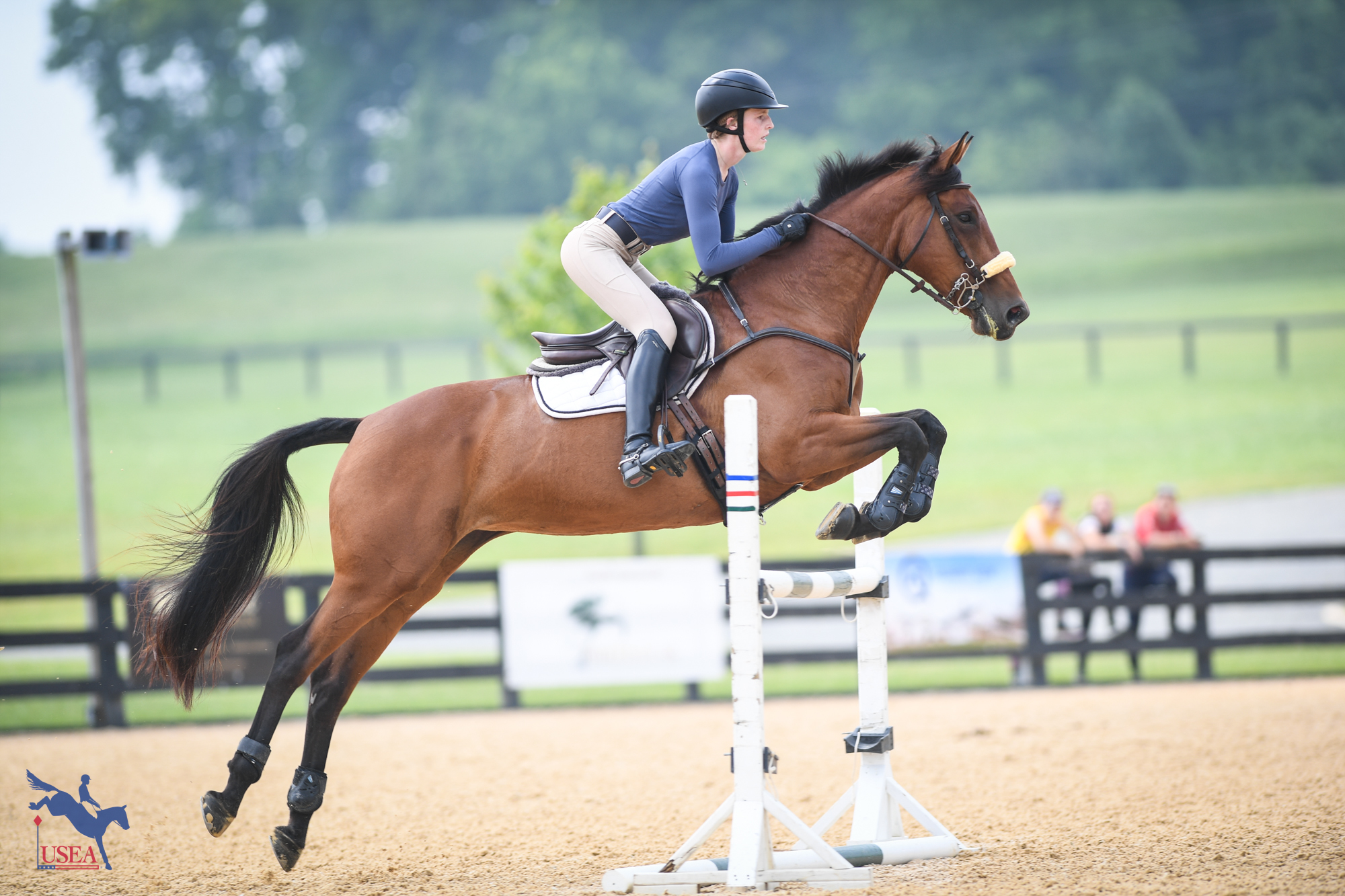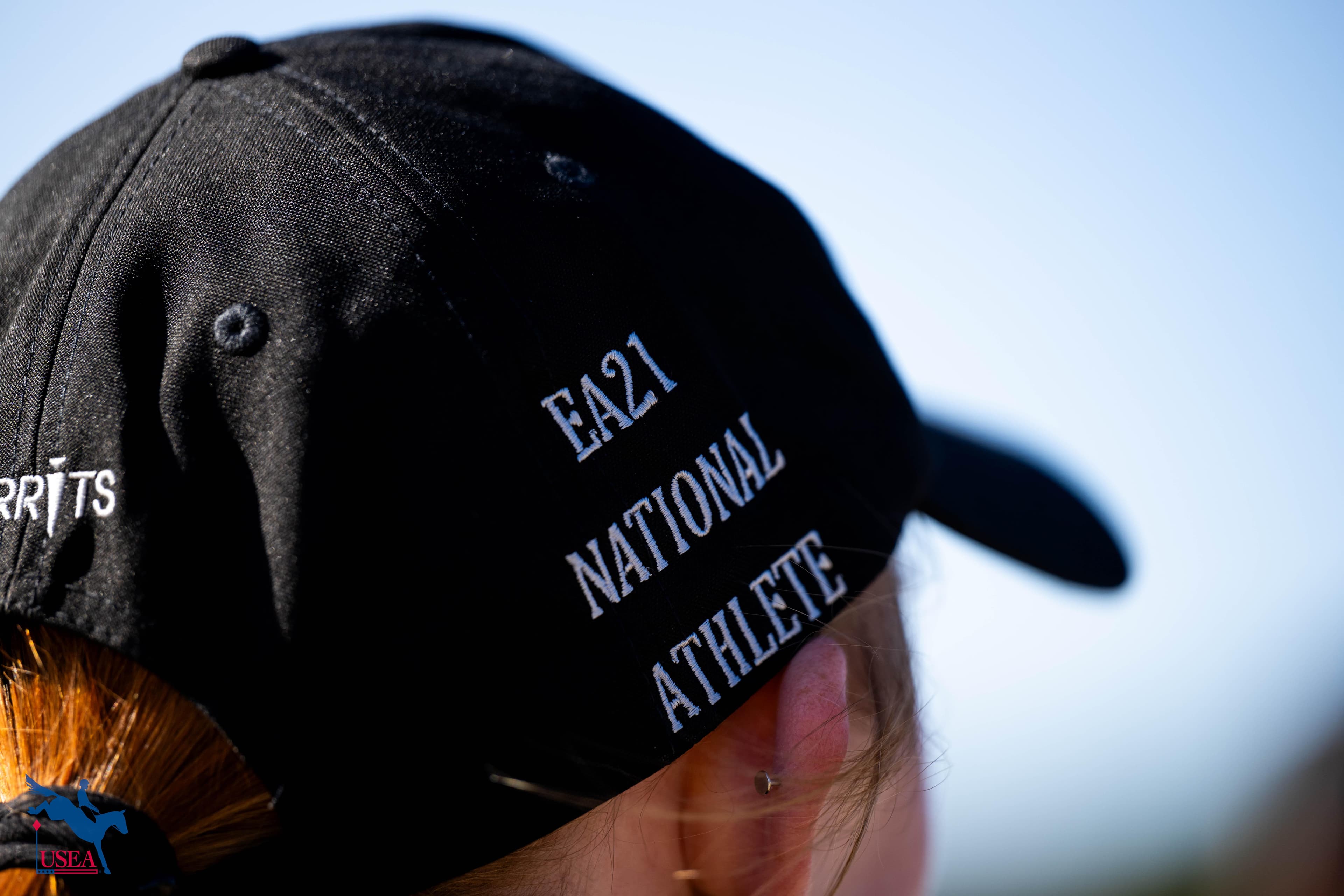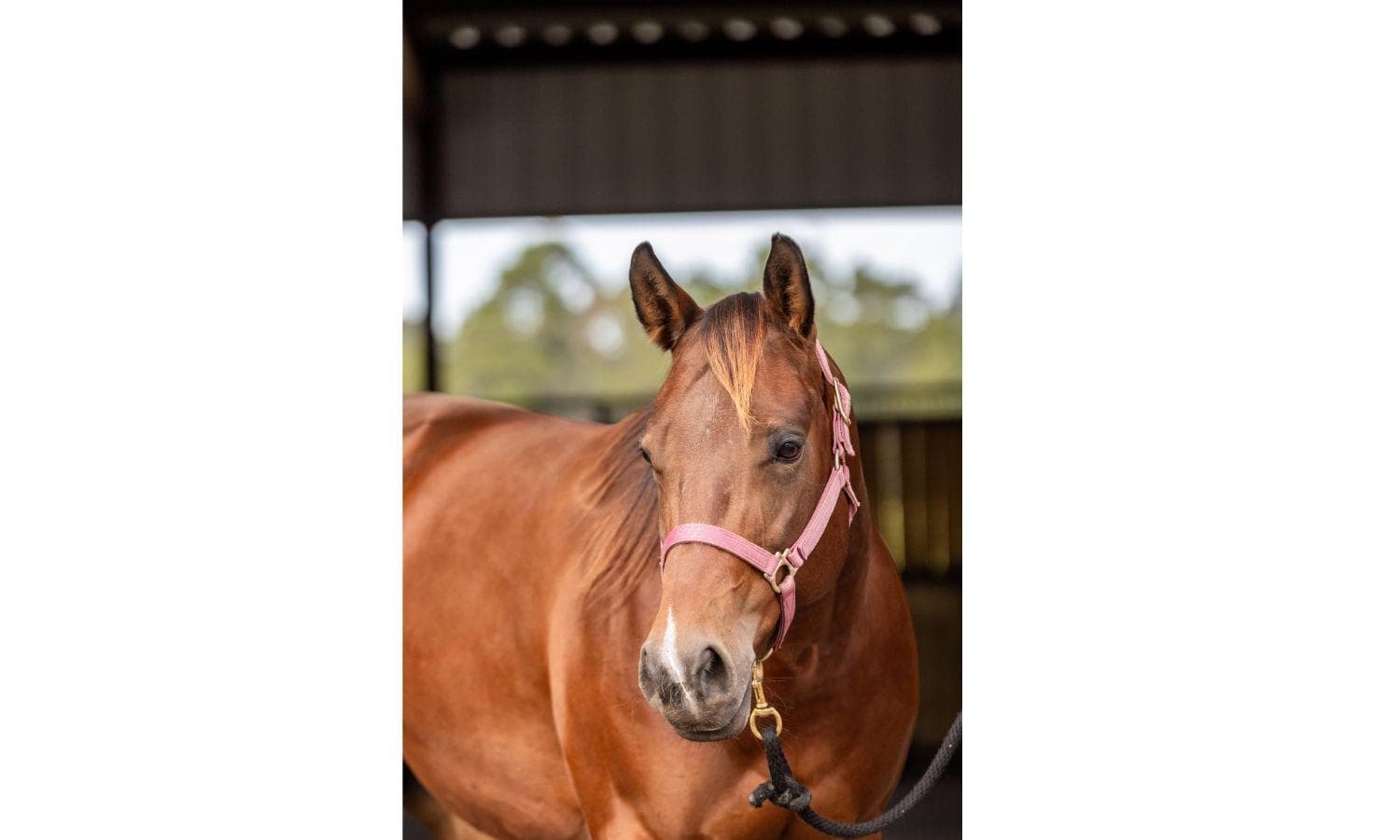Adjustability Over Fences On Day 2 of the EA21 East I Regional Clinic

In yesterday’s dressage lessons at the USEA Emerging Athlete (EA21) East I Regional Clinic, Eventing Coaches Program (ECP) coach Shannon Lilley worked the 12 EA21 riders through a series of exercises designed to improve rhythm and balance, and today, they got to test what they learned over a course of show jumps at the Morven Park International Equestrian Center in Leesburg, Virginia.
Adjustability was key for the warmup exercises for each of the groups. They started with two cross rails a steady five strides apart, then Lilley asked them to make it six strides. Then they added another cross rail in, which was positioned at a 90-degree angle from the second cross rail, about four strides away.
Riders went through the exercise, adding strides in the bend and on the straight line, then halting, doing a turn on the forehand, and going back to test their horses’ adjustability.
“Yesterday we talked about what their jobs are in the saddle when it comes to jumping,” said Lilley. “The first thing is to be able to go in a straight line in the direction you’re going. You have to be able to go in a straight line and turn. So, the point of [this exercise] is to go in one rhythm in one canter and be able to jump two jumps in a line and then do it turning with three jumps. They should be able to do it on different length of strides. They can add steps or go on a normal stride. They were all great, even the ones on the greener horses.”

The challenge of the exercise came from the turn, which came up quick, so riders had to be patient and use the line to create the distance being asked.
“The way they shape the turn is what creates the number of strides, not so much that they have to then take them back to go forward or go forward to come back,” said Lilley. “They can stay on an even step and use their line to create the distance.”
Some horses were a little fresh in the cool morning air, so Lilley made sure to tell their riders to keep soft elbows and follow, not restrict and get the neck short to and over the fence.
Next, they moved on to a square oxer with placing poles on either side to help the horses create a good shape over the fence. Then they incorporated that oxer into a bending line to get to the cross rail exercise.
“They have the communication that they developed in the first exercise, and they take that to the oxer, then to be able to maintain it and go back to that exercise,” said Lilley. “It’s to create some shape for the horses and get them up off the ground, then they can take that into the course. That they know that’s the shape we’re looking for. If they were to just canter an oxer on a long approach, often the canter stride just gets bigger and bigger, so it makes them have to stay true to the rhythm and true to that same size step.”
After that, riders continued on to a course with a one-stride, a vertical on the short side, a Swedish oxer, bending lines and roll backs.

“The whole course is designed so if they can stay in one rhythm at the jumps, and they might have to do transitions within it to keep that canter, depending on the horse, then it all works out real easily, and it’s smooth,” said Lilley. “If they have horses where the canter changes all the time, then it makes it more challenging, and they might not meet the distances the way they need to, but everything we started out with builds into it and is designed to make the course real easy to execute.”
Lilley was impressed by the quality of the riders, who were mounted on everything from green horses at training level up to FEI horses.
“It’s a really good group of riders, and they’re all very well-coached. They all come from good programs. There’s some that are greener than others, and that’s OK. They’re earlier in their stages of development, and same with the horses,” said Lilley. “They’re all really impressive, and they handled the exercises well. It’s exciting for the program.”
Don't forget to follow the USEA’s coverage on social media!
Facebook | Instagram | Twitter
About the USEA Emerging Athlete U21 Program (EA21)
The purpose of the USEA Emerging Athletes U21 Program (EA21) is to identify and provide consistent quality instruction to the next generation of elite event riders. The aim is to create a pipeline for potential team riders by identifying and developing young talent, improving horsemanship and riding skills, and training and improving skills and consistency.
The USEA Emerging Athletes U21 Program was launched in 2022 with a model of five summertime regional clinics taught by selected USEA Eventing Coaches Program (ECP) instructors, leading to a winter national camp consisting of selected Young Riders from the regional clinics. Athletes who are 21 years or younger, are current members of their USEA Young Rider Area program, and are established at the Training Level or higher, are eligible to apply for the EA21 program. Click here to learn more about the USEA EA21 Program.
The USEA would like to thank Kerrits, Ride iQ, Sidelines Magazine and WeRideTogether for sponsoring the USEA Emerging Athletes U21 Program.

















































